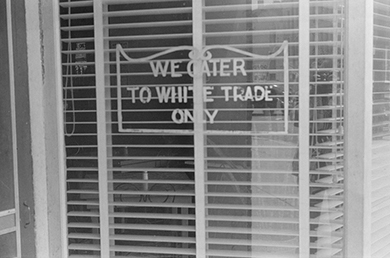| << Chapter < Page | Chapter >> Page > |
During the 1960s, the federal government, encouraged by both genuine concern for the dispossessed and the realities of the Cold War, had increased its efforts to protect civil rights and ensure equal economic and educational opportunities for all. However, most of the credit for progress toward racial equality in the Unites States lies with grassroots activists. Indeed, it was campaigns and demonstrations by ordinary people that spurred the federal government to action. Although the African American civil rights movement was the most prominent of the crusades for racial justice, other ethnic minorities also worked to seize their piece of the American dream during the promising years of the 1960s. Many were influenced by the African American cause and often used similar tactics.
For many people inspired by the victories of Brown v. Board of Education and the Montgomery Bus Boycott, the glacial pace of progress in the segregated South was frustrating if not intolerable. In some places, such as Greensboro, North Carolina, local NAACP chapters had been influenced by whites who provided financing for the organization. This aid, together with the belief that more forceful efforts at reform would only increase white resistance, had persuaded some African American organizations to pursue a “politics of moderation” instead of attempting to radically alter the status quo. Martin Luther King Jr.’s inspirational appeal for peaceful change in the city of Greensboro in 1958, however, planted the seed for a more assertive civil rights movement.
On February 1, 1960, four sophomores at the North Carolina Agricultural&Technical College in Greensboro—Ezell Blair, Jr., Joseph McNeil, David Richmond, and Franklin McCain—entered the local Woolworth’s and sat at the lunch counter. The lunch counter was segregated, and they were refused service as they knew they would be. They had specifically chosen Woolworth’s, because it was a national chain and was thus believed to be especially vulnerable to negative publicity. Over the next few days, more protesters joined the four sophomores. Hostile whites responded with threats and taunted the students by pouring sugar and ketchup on their heads. The successful six-month-long Greensboro sit-in initiated the student phase of the African American civil rights movement and, within two months, the sit-in movement had spread to fifty-four cities in nine states ( [link] ).

In the words of grassroots civil rights activist Ella Baker, the students at Woolworth’s wanted more than a hamburger; the movement they helped launch was about empowerment. Baker pushed for a “participatory Democracy” that built on the grassroots campaigns of active citizens instead of deferring to the leadership of educated elites and experts. As a result of her actions, in April 1960, the Student Nonviolent Coordinating Committee (SNCC) formed to carry the battle forward. Within a year, more than one hundred cities had desegregated at least some public accommodations in response to student-led demonstrations. The sit-ins inspired other forms of nonviolent protest intended to desegregate public spaces. “Sleep-ins” occupied motel lobbies, “read-ins” filled public libraries, and churches became the sites of “pray-ins.”

Notification Switch
Would you like to follow the 'U.s. history' conversation and receive update notifications?